How to Remove Chunago from Mac (Complete Guide)
Before we dive in
Keeping your computer safe while you're online is crucial. That's why we developed SpyHunter — a tool designed to enhance your digital security.
Boost your online protection today — download SpyHunter for Mac here! We've also put together our top tips and solutions below to help you stay protected.

Are you bothered by an influx of unwanted ads on your Mac? This might be caused by the Chunago adware.
This article explores what Chunago is, its impact on your Mac’s performance and security, and the steps you can take to remove this unwanted software.
In addition to the information about how Chunago commonly operates, you will also find a step-by-step guide on how to remove it from your Mac.
What is Chunago adware on Mac?
Chunago is a type of adware that specifically targets macOS devices. Chunago commonly infiltrates Mac systems through the practice of bundling with other legitimate software, through misleading ads, or compromised websites. Once installed, it integrates itself into the system, making it difficult to detect and remove.

Unlike some adware that merely displays ads, Chunago takes more aggressive actions, altering system settings and injecting itself deeply into the operating system. This adware can hijack web browsers, redirecting users to unwanted websites and displaying incessant pop-ups and banners.
Potential risks posed by the Chunago adware
Chunago poses several risks that should not be overlooked:
- Privacy Invasion: Chunago can track your browsing habits, search queries, and even personal information, which it then uses to serve targeted ads. This data collection can lead to serious privacy concerns, as sensitive information may be exposed or sold to third parties.
- System Performance Degradation: The constant operation of Chunago in the background can use up system resources, leading to slower performance, increased load times, and overall reduced efficiency of your Mac.
- Security Vulnerabilities: By modifying system and browser settings, Chunago can weaken your Mac’s security defenses. This can open the door to more severe malware infections.
- Financial Risks: Some adware, including Chunago, can redirect users to phishing websites or malicious ads designed to steal financial information. This can result in fraudulent charges or identity theft.
Common symptoms of having Chunago on your Mac
Detecting Chunago on your Mac can be challenging, especially since it often disguises itself as a legitimate application. However, there are several telltale signs that may indicate its presence:
- Unwanted Ads and Pop-ups: If you notice an unusual number of ads, especially ones that appear in unexpected places, Chunago may be to blame.
- Browser Hijacking: A clear sign of Chunago infection is your web browser being redirected to unfamiliar websites. Your default search engine or homepage might be changed without your consent, and you may find it difficult to revert these settings.
- Unauthorized Installations: Adware often brings along additional unwanted software. If you notice unfamiliar applications or extensions installed on your Mac or browser, Chunago might be behind it.
- Security Alerts: Some security software might detect Chunago-related activity or components. Those may be alerts originating from security solutions integrated into your Mac, like XProtect and Gatekeeper, or from third-party anti-malware tools you use.
Remove Chunago from Your Mac
Eliminating Chunago adware from your Mac can be relatively simple with a step-by-step approach. This guide outlines each phase of the manual removal process, ensuring you can reclaim your system without needing extensive technical expertise.
Step 1: Remove malicious profiles
Unwanted applications like Chunago can install malicious configuration profiles to override your browser settings and make those changes difficult to revert.
- Open
System Settingsfrom either theDockor the top menu. - Navigate to the
Privacy & Securitysection and click onProfiles. If you don’t see this option, it means no profiles are installed. - Check for any unfamiliar profiles or those that specifically include Chunago in their name. These profiles could be altering your browser settings without your consent.
- Select the unwanted profile and click the minus (-) button at the bottom of the window to remove it.
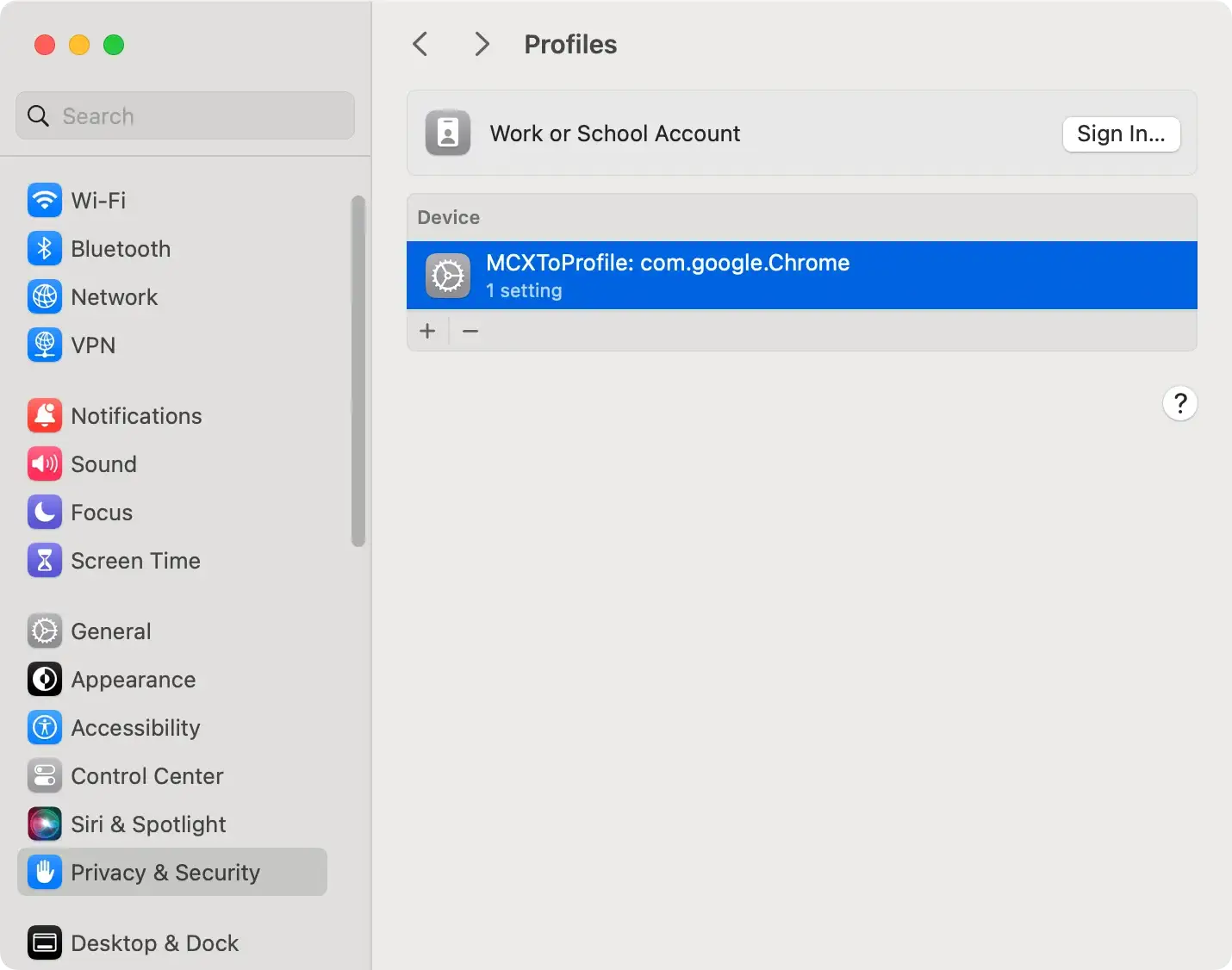
Step 2: Delete the Chunago app
To continue removing Chunago from your Mac, identify and delete any malicious applications.
Follow these steps:
- Open a new
Finderwindow and go to theApplicationsfolder. - Scroll through the list to find any applications associated with Chunago.
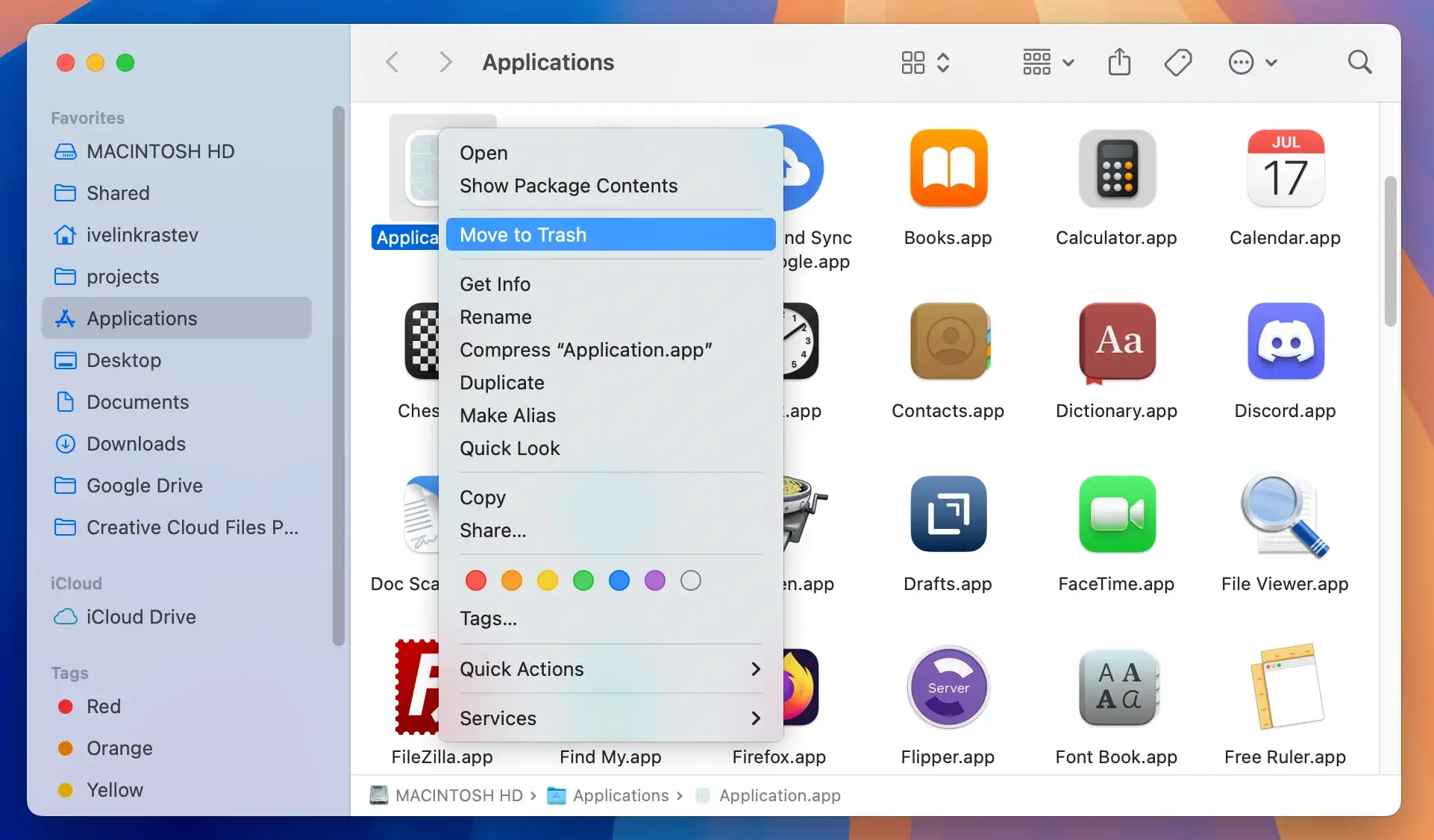
- Drag the Chunago application to the
Trash, or right-click on the app and chooseMove to Trashfrom the context menu.
Step 3: Remove files and folders linked to Chunago
Unwanted applications often leave behind trace files that you should manually remove.
Open a Finder window, click on the Go menu at the top of the screen, then select Go to Folder from the dropdown.
Enter each of the following paths one after the other and press Return after each one:
/Library/LaunchAgents//Library/Application Support//Library/LaunchDaemons/- ~
/Library/LaunchAgents/ ~/Library/Application Support/
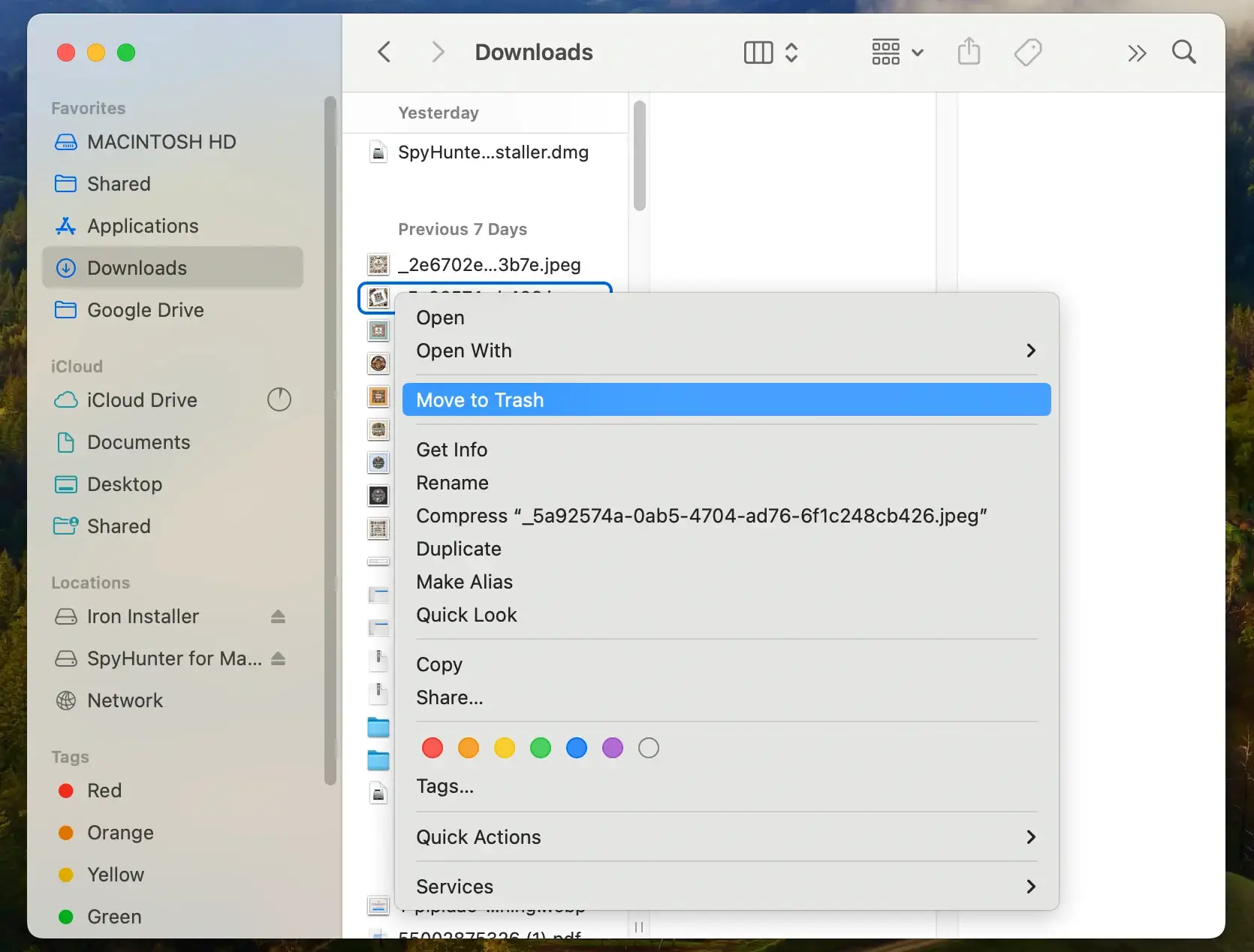
Inside those locations, look for any folders or files associated with Chunago and drag them to the Trash. After deleting them, empty the Trash to permanently remove them from your Mac.
Step 4: Eliminate Chunago extensions from all browsers
How to remove Chunago from Safari
Open Safari and navigate to Preferences from the Safari menu. Select the Extensions tab to see all your installed extensions. Identify and remove any extensions that you didn’t install or that appear suspicious.
Deleting Chunago extensions from Chrome
If using Chrome, click the three dots button in the upper right to access Settings, then select Extensions from the menu on the left. Examine the list for any unfamiliar extensions or ones including Chunago in their name and click Remove to delete them.
Purge Chunago add-ons from Firefox
In Firefox, click on the three bars to open the menu and select Add-ons. Go to the Extensions tab and examine the list for any unrecognized extensions. Click the three-dot icon next to the suspicious add-on and select Remove to eliminate it.
Step 5: Remove Chunago Using SpyHunter
SpyHunter can help you get rid of stubborn adware that manual steps might miss. Its deep scan feature finds hidden files and apps related to Chunago, keeping your Mac clean and secure.
Using SpyHunter makes the cleanup process easy and improves your device’s protection against future adware and malware attacks.
Here’s how to use SpyHunter to remove Chunago:
- Download SpyHunter and proceed with the on-screen instructions to install it on your Mac.
- Launch SpyHunter and run a full system scan. The software will look for Chunago and other threats.
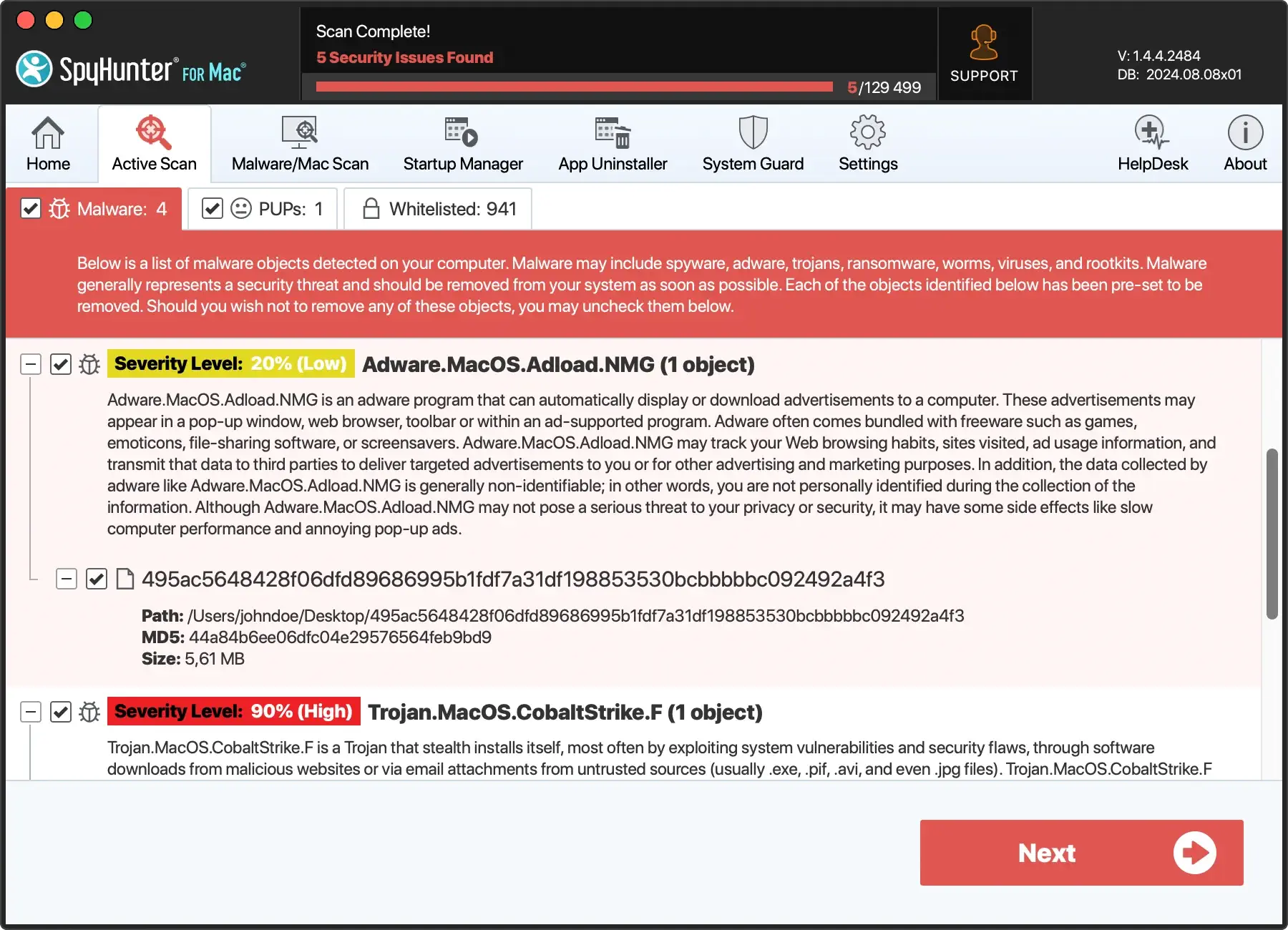
- After the scan, SpyHunter will show a list of detected malware. Look for any entries related to Chunago.
- Select the unwanted entries and proceed with the cleanup process to remove Chunago and any related files.
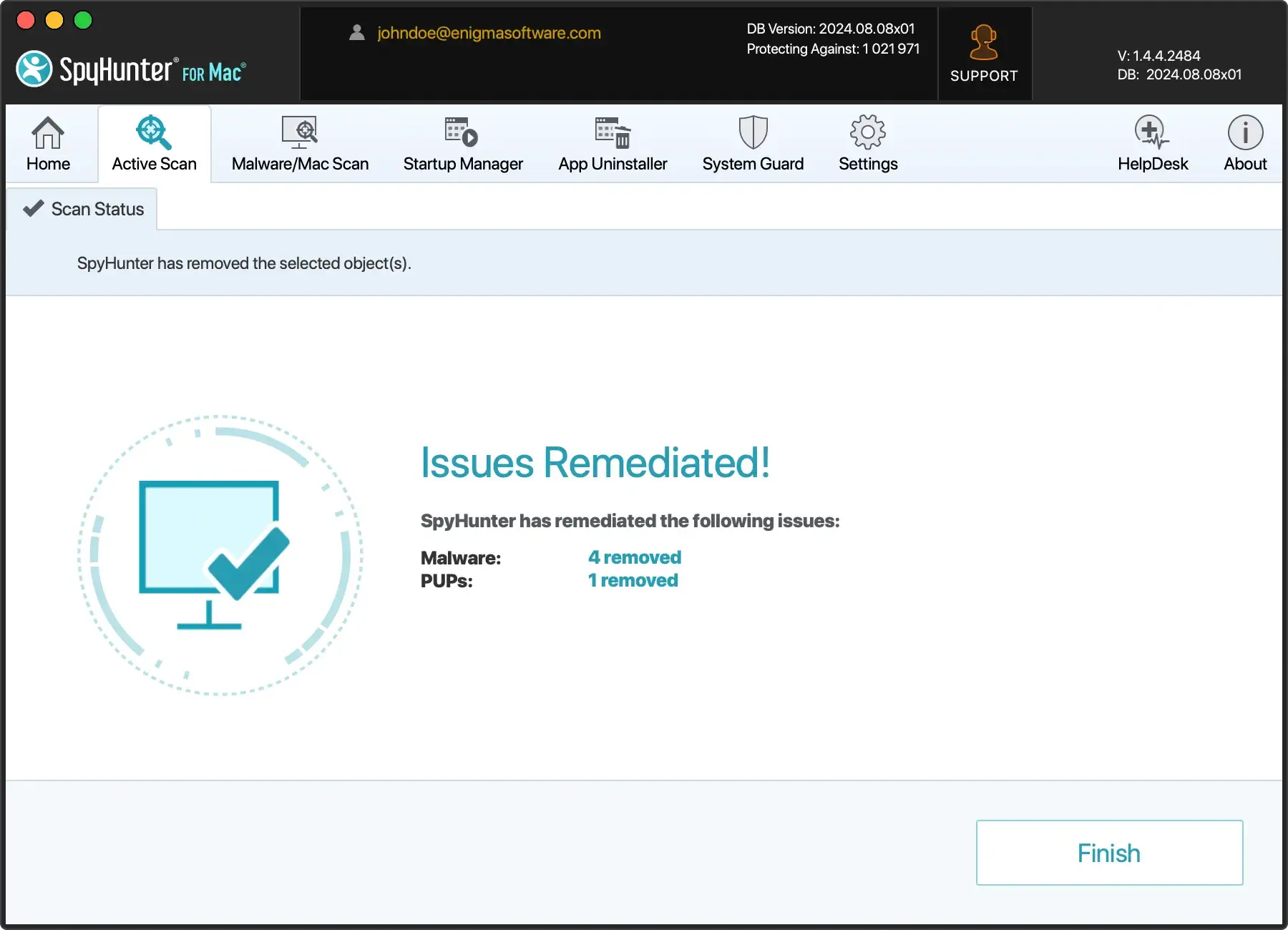
Following these simple steps will boost your Mac’s security and performance by getting rid of Chunago and similar adware.
Conclusion
Adware and similar potentially unwanted apps can be more than just a nuisance on your Mac. Ensuring their full and proper removal means a safer browsing experience and better privacy.
To keep a Mac clean of adware, download software only from trusted sources like the official Mac App Store or reputable developers’ websites. Regularly update macOS and all installed applications to benefit from the latest security patches.
Use a reliable anti-malware tool to scan your system periodically for any malicious software. Be cautious with browser extensions and only install those from trusted developers, ensuring to review their permissions.
Finally, avoid clicking on suspicious links or pop-up ads that can lead to rogue pages and further security issues.